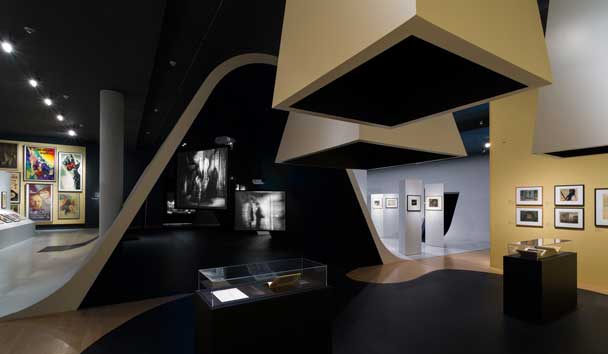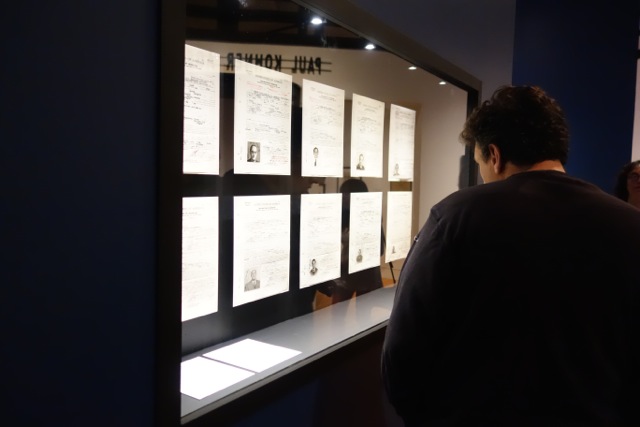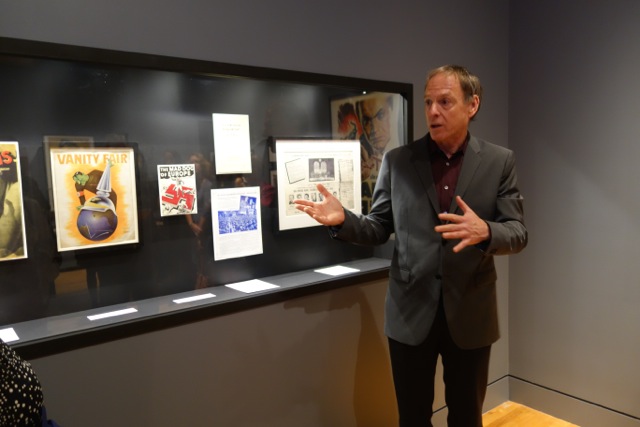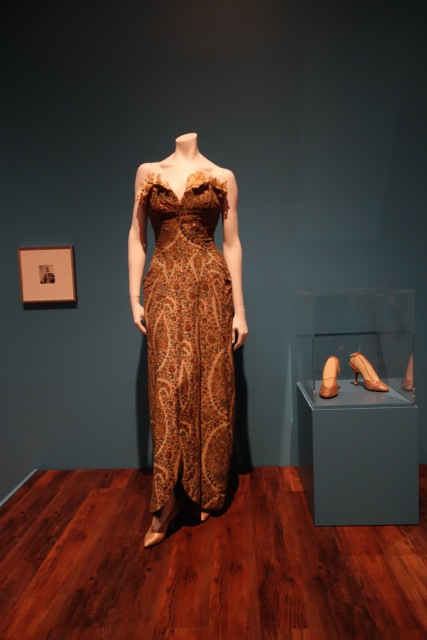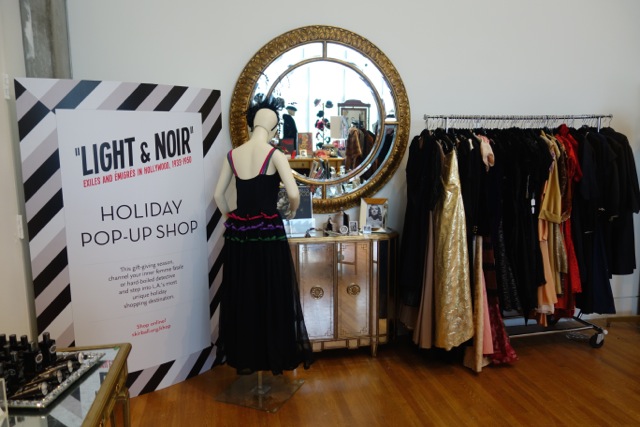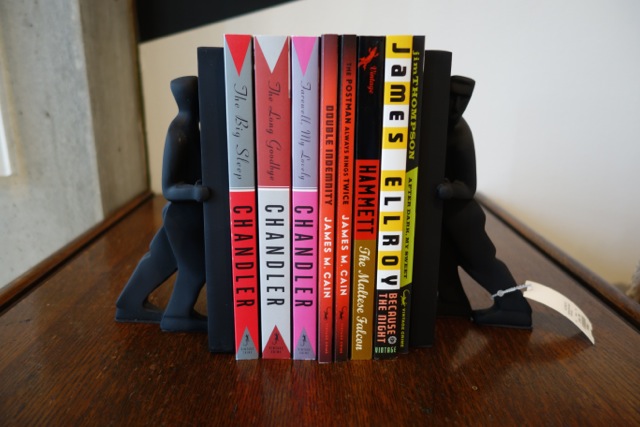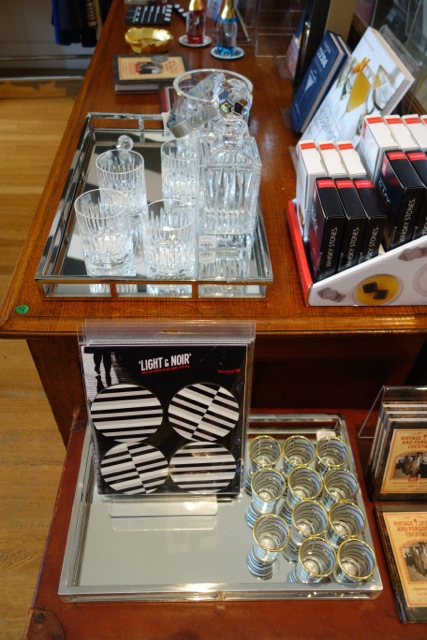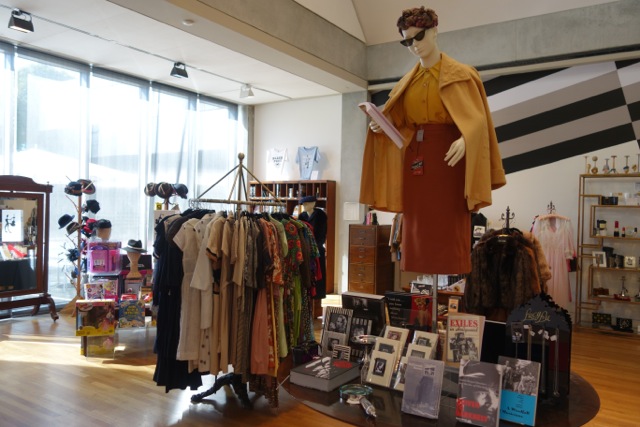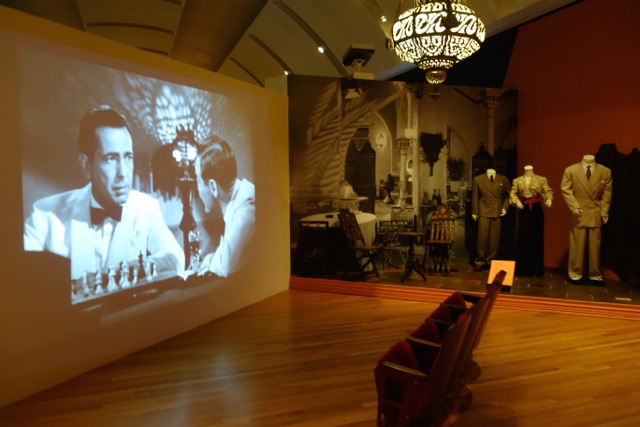
Los Angeles currently has two museum exhibitions that explore the creative legacy of German filmmakers, and each show has an innovative presentation that will appeal to visitors, whether they be film buffs or not.
Co-presented with the Academy of Motion Picture Arts and Sciences, the Skirball Cultural Center’s new show, Light & Noir: Exiles and Émigrés in Hollywood, 1933–1950 focuses on the experience of (mostly) Jewish immigrants whose talent and courage pushed American cinema to new heights. Light & Noir‘s Hollywood-era focus is cleverly complemented by LACMA’s Haunted Screens: German Cinema in the 1920s which covers the period before the rise of the Nazi powers, in the days when German Expressionist cinema was on the leading edge of worldwide breakthroughs in design and storytelling techniques. What was good for Germany turned out to be extremely good for Hollywood and viewing the exhibits sequentially (LACMA first, ideally), provides an intriguing dose of history – onscreen and off.
LACMA’s Haunted Screens
LACMA’s show, which originated at La Cinémathèque française, Paris (but was augmented by LACMA and the Academy for the Los Angeles exhibit) is a classical survey of film memorabilia — from film clips, photographs, posters, documents, and cameras — and is the third LACMA show this year to examine work produced in Germany before, during, and soon after the war. The popular summer show, Expressionism in Germany and France (closed September 2014) explored the cosmopolitan exchange in Europe that gave rise to the Expressionist movement in painting, and Marsden Hartley (on view through November 30, 2014) portrays the profound impact WWI had on the American painter’s body of work. The Hartley show is a revelation, and not to be missed if you like this painter’s style.
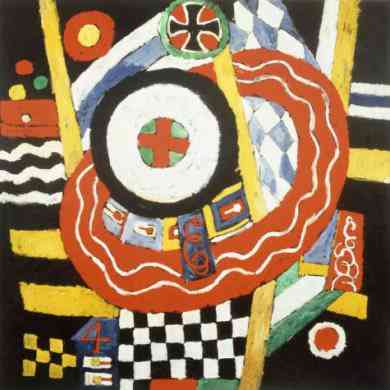
What makes Haunted Screens exciting to anyone walking into the space is the exhibit design itself, which comes from Amy Murphy and Michael Maltzan, with Michael Maltzan Architecture, Inc., and has myriad structures within the galleries that mimic the spectacular spatial invention of the Expressionist period. It’s a dazzling (and costly) choice for display and we urge you to at least take a look inside — it’s worth a few moments, and be sure not to miss the silver robot from Metropolis at the back of the gallery. (He bears an uncanny resemblance to Oscar, doesn’t he?)
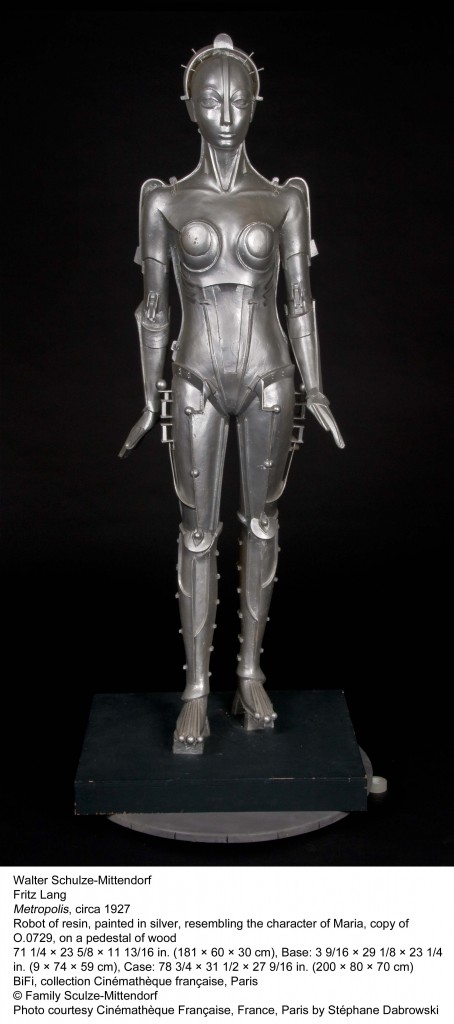
The Skirball’s Light & Noir
The Skirball’s show, which was curated by the museum’s own staff, tells the personal stories of Germans who were forced to flee to Hollywood when the Nazis came to power at the height of the German cinema’s Golden Age (the work from the LACMA show).
The show tracks the physical and emotional journey of German Jews who were helped by several important Germans who already had footholds in Hollywood: Marlene Dietrich was an important resource for the exiles who landed in Los Angeles, as was the founder of Universal, Carl Laemmle. And, there were others: Ernst Lubitch (who went on to direct very successful American films), cosmetics magnate Max Factor and Paul Kohner (a talent agent).
Having the immigrant experience laid out boldly is quite moving, and the show does an excellent job tracking the journey of Germans, many of whom had to travel to Mexico (and other nations) in order to get to the US. Viewers are treated to the immigration paperwork of many celebs, such as Dietrich and the soon-to-be famous Peter Lorre.
The concentration of emigres fueled Hollywood’s “Golden Age”. Movies of all kinds flourished – dark noirs (Double Indemnity, Mildred Pierce) and lighter comedies (A Foreign Affair, Ninotchka). The exhibit revels in props and artifacts from the glory days, and also uses partitioned walls and spaces to tell the different personal and cinematic stories of the individuals involved. A dynamic presentation of artifacts helps them come alive and the curators did what they could to put the viewer in the footsteps of the German emigree.
The Skirball’s mission to explore the democratic process is reflected in the show’s attention to courageous acts taken by individuals and these stories are good to share with teens, as a way to initiate conversions about standing up for what you believe in, not matter how difficult. Skirball Museum Director Robert Kirshner gave an impassioned account of how such seemingly small acts of courage paved the way for change, and here he points out a pamphlet in which the Warner brothers publicly decried the Nazis before American forces entered the war, words that could well have cost them their nascent studio’s business.
Another act of courage, which was actually discovered by the curators in the course of their preparation for the show, was that Marlene Dietrich used a dress in the film A Foreign Affair that she’d worn while entertaining the troops, a few years earlier – again, before the war. Rarely do stars wear their own clothes in a movie so this was her nod to the war effort against her country of origin.
By including props and film clips from the most popular film of all time, Casablanca, the exhibit underlines that particular film’s attention to the plight of an emigres community, citizens without countries, fighting for justice in an unjust time. Of course, the romance of that film is paramount, but this exhibit underlines the setting as a commentary on the struggles of those in political strife.
It’s a sad fact, however, that even with the success of Casablanca and subsequent to the most innovative years in Hollywood’s history, the anti-communist backlash swept away much of the freedom and progress, sending some Americans into exile, once again. We see images of Bogart and Bacall, the global stars of Casablanca, marching on Washington in a room is dedicated to Hollywood’s blacklisted creatives.
The show does not end on this somber note, but leaves visitors with the hope that ideas stay alive; the last room of the exhibit is a recreated living room of the home of Lion & Marta Feuchtwanger, German emigres who led a salon for American artists and intellectuals. (Learn more and visit their home, Villa Aurora, in Pacific Palisades).
Holiday Pop-Up Shop with Vintage Clothing and Jewels
There is no doubt that American fashion went through a glam phase during the Golden Age of cinema and the Skirball has put together a pop up shop with an impressive array of vintage clothing and jewelry. From delicate lingerie that has never been worn, to lovely art-deco cocktail tray items, and with dresses, hats, suits and coats, this is worth a few moments of your time.
Additional Reading: try Five Came Back: A Story of Hollywood and the Second World War by Mark Harris
Additional Adventures: read our post about the Los Angeles Museum of the Holocaust which tells the story of those who fled from Germany to Los Angeles.

